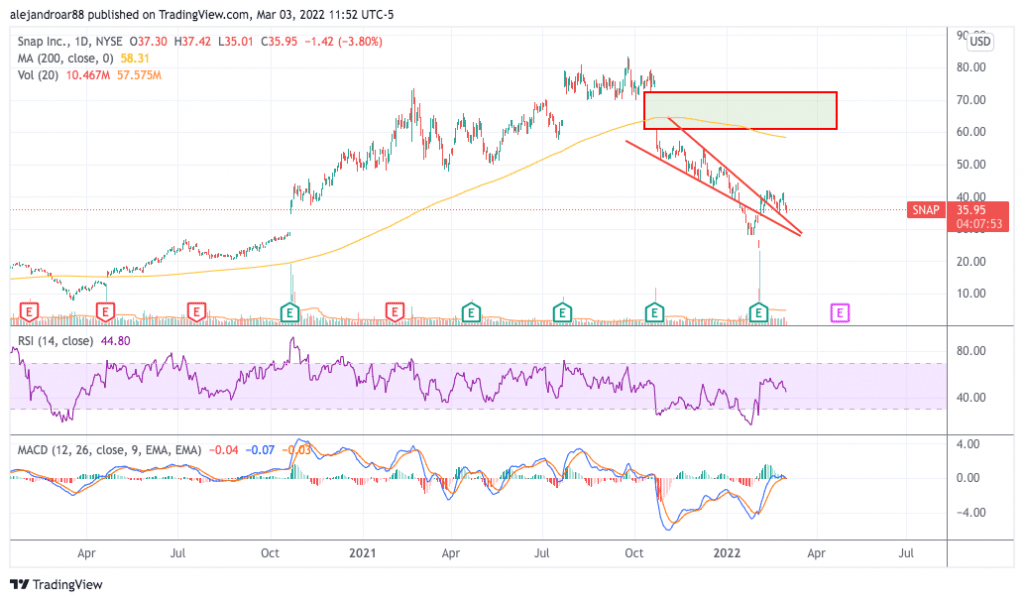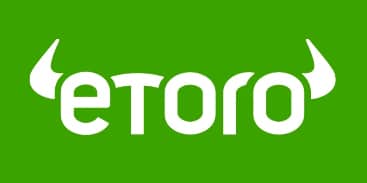Snap Stock Down 6% Today – Time to Buy SNAP Stock?
Please note that we are not authorised to provide any investment advice. The content on this page is for information purposes only.
The price of Snap stock is declining 6% in early stock trading action making this the third consecutive day of pronounced losses for the social media stock as US Treasury yields have bounced back following their late February breather.
Tech stocks as a whole are reacting negatively to this jump in yields with the Nasdaq Composite Index dropping 1.15% as well at 13,594 while market participants are also actively monitoring how the conflict between Russia and Ukraine keeps unfolding.
Shares of Snap climbed 22.7% in February on the back of a strong quarterly report that easily erased some early losses the stock had experienced.
On 8 February, Snap priced an upsized $1.3 billion convertible senior note offering due in 2028 as part of a private placement among qualified institutional investors. The company said it expected to settle the transaction on 11 February. The notes will carry a 0.125% per year interest rate.
The conversion price for the notes was $56.34 per share – around 58.7% above the current market price – and they cannot be redeemed before 5 March, 2025. The favorable pricing on the notes was interpreted as a strong pad on the back from market participants to the company and shares surged nearly 9% the day after they were priced.
What could be expected from this social media stock after these interesting developments? In this article, I’ll be assessing the price action and fundamentals of SNAP stock to outline plausible scenarios for the future.
67% of all retail investor accounts lose money when trading CFDs with this provider.
Snap Stock – Technical Analysis

Back in mid-January when I last wrote about Snap, I emphasized that the outlook for the stock in the near term was bearish as market participants were probably aiming to close the October 2020 price gap.
This gap was filled only 10 days after and then the price kept dropping to a 52-week low of $24.3 per share to then bounce sharply following the release of the latest quarterly report.
Even though the price has broken above the falling wedge formation highlighted in the chart, SNAP has not yet posted a higher high and this is a reason to doubt that this could be the beginning of a full-blown trend reversal.
Momentum indicators are also a bit mixed as the Relative Strength Index (RSI) has failed to stay above the 50 threshold – typically a bearish signal – while the MACD has moved to positive territory but is now en-route to cross below the signal line.
All things considered, it seems too early to tell if this recent rebound is leading the way toward what could be a strong recovery in the price of SNAP or if this could just be a dead-cat bounce that may be followed by further weakness in the stock price if the macro conditions keep deteriorating.
Snap Stock – Fundamental Analysis
Snap’s revenues grew 64% this past year at $4.1 billion and they are expected to climb $5.65 billion resulting in a 37.2% year-on-year jump in 2022.
Even though growth will decelerate compared to pre-pandemic levels, that seems normal considering the tough comps the company is facing.
GAAP operating margins have been evolving positively in the past few years. Even though they remain negative, Snap has managed to trim those negative margins significantly and a path to profitability is now clearer than ever.
Last year, the company produced $223 million in positive free cash flows for an FCF margin of 5.4%. If revenues end this year close to what analysts expect, the company could produce at least $300 to $400 million in positive FCFs.
Based on the company’s market capitalization of $58.5 billion today, Snapchat is trading at 146 times that forecasted cash flow figure and at around 10 times its sales.
The cash flow multiple might not be the best guide to value SNAP as the company just swung to positive FCFs. However, the forward P/S multiple seems a bit high considering the state of the markets right now.
If multiple interest rate hikes do take place this year and the Federal Reserve decides to shrink its balance sheet, there is still plenty of room for those multiples to compress and that increases the downside risk for a richly valued stock like SNAP.
Overall, Snap doesn’t look like a buy from either a technical or fundamental perspective at these levels. That does not mean the business is not attractive, just not at this price.






